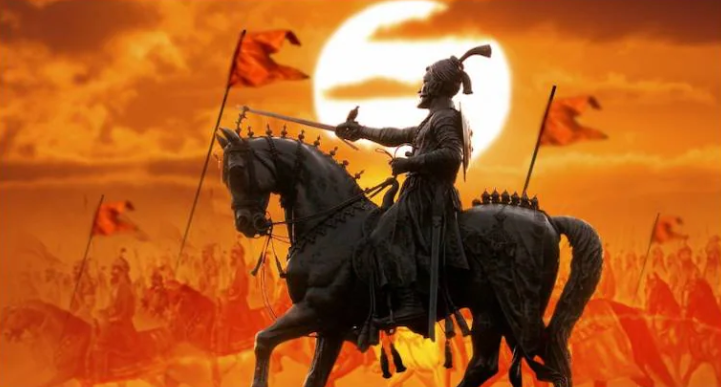Chhatrapati Shivaji Maharaj and the Legacy of the Maratha Empire (GS Paper 1, History)

Recent Developments
- A 35-foot statue of Chhatrapati Shivaji Maharaj, unveiled at Rajkot Fort in Malvan, Sindhudurg district, collapsed less than a year after its installation.
- This incident starkly contrasts with the enduring Sindhudurg Fort, which was constructed by Shivaji Maharaj over 350 years ago and remains a resilient symbol of Maratha military strength.
The Significance of Sindhudurg Fort
Construction Timeline:
- Sindhudurg Fort was commissioned on November 25, 1664, and completed by March 29, 1667.
- Built on the island of Kurte in the Arabian Sea, it was strategically positioned to enhance maritime defense against foreign powers such as the Siddis and the Portuguese.
Cost and Economic Impact:
- The fort's construction cost was estimated at one crore hons, a significant investment funded largely by the wealth acquired during the Surat raids.
Architectural Features:
- The fort features a serpentine wall stretching four kilometers and stands ten meters high, complete with 45 stairways.
- Its design included facilities for guards and cannons, alongside a prominent statue of Hanuman at the entrance.
Maritime Strategy:
- Shivaji Maharaj’s vision for the fort was to establish maritime dominance, ensuring economic stability and defense of the coastline.
The Surat Raids
Strategic Importance of Surat:
- Surat was the epicenter of trade during the Mughal era, often referred to as the "greatest emporium of the Orient."
- Its location on the southern bank of the Tapi River made it crucial for Mughal economic activities and a transit hub for pilgrims heading to Mecca.
First Raid (January 1664):
- Shivaji's first raid on Surat caught Mughal forces by surprise, resulting in substantial loot estimated at one crore rupees.
- This wealth was pivotal for the construction of Sindhudurg Fort and the expansion of the Maratha Navy.
Second Raid (October 1670):
- A second raid in 1670 further underscored Shivaji's strategy, yielding wealth worth approximately Rs 6.6 million.
- Notably, Dutch and English merchants were spared, indicating a strategic restraint aimed at undermining Mughal authority while minimizing civilian casualties.
Chhatrapati Shivaji Maharaj: A Visionary Leader
Early Life and Ascension:
- Born on February 19, 1630, at Shivneri Fort, Shivaji quickly rose to power by capturing key forts like Torna and Kondana.
- He was crowned the king of the Marathas on June 6, 1674.
Administration and Military Strategy:
- Shivaji's governance was characterized by the "Ashtapradhan" council of ministers and revenue systems such as Chauth and Sardeshmukhi, which helped fund military campaigns.
The Maratha Empire's Journey Post-Shivaji
Challenges After Shivaji's Death:
- Shivaji's passing in 1680 led to a turbulent period, with his son Sambhaji facing capture and execution by Mughal forces.
- The empire's leadership struggled until the rise of the Peshwas.
Rise of the Peshwa:
- The appointment of Balaji Vishwanath as Peshwa in 1713 marked a new era for the Maratha Empire, characterized by significant territorial expansion under leaders like Baji Rao I.
Maratha Confederacy and Decline:
- By the early 18th century, internal divisions weakened the central authority, leading to the formation of a confederacy among various Maratha factions.
- The series of Anglo-Maratha Wars culminated in the third war (1817-1818), which led to the dissolution of the empire.
Conclusion
- The recent collapse of the statue of Shivaji Maharaj highlights the need for respect and preservation of historical legacies.
- As we reflect on the achievements of the Maratha Empire, it is essential to ensure that modern representations honor their true significance and reinforce their value as cultural heritage.
- This calls for improved project management and preservation strategies that safeguard the legacy of historical figures like Shivaji Maharaj.


